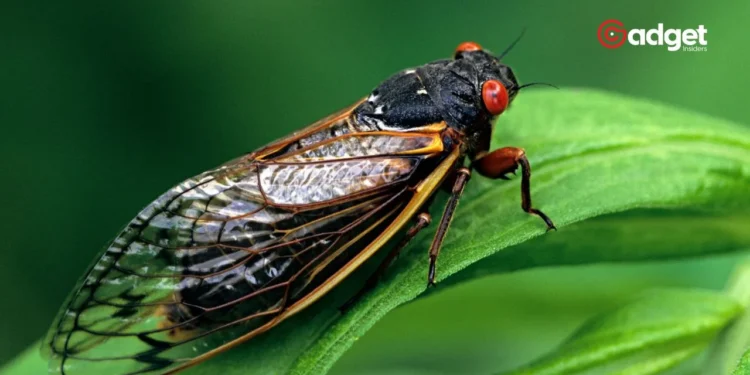This spring marks a momentous occasion in the natural world as millions of cicadas from the historic Brood XIII and XIX make a synchronized debut, a phenomenon not seen in 221 years. These periodical cicadas, known for their distinct red eyes and remarkable life cycle, are emerging across various states including Illinois and Indiana, captivating enthusiasts and startling the uninitiated with their deafening mating calls.

The Synchronized Swarms: Brood XIII and XIX Take the Stage
Cicadas from Brood XIII and Brood XIX are setting the stage for a unique natural event. As both broods, separated traditionally by their 17 and 13-year life cycles, converge in the same regions, they create a “simultaneous explosion” of noise and activity. This emergence is particularly special as it is the first time these broods have overlapped in over two centuries.

Going Viral: Cicadas Capture Social Media’s Attention
The event has not only stirred the curiosity of those witnessing it firsthand but has also taken social media by storm. Posts depicting the cicadas’ emergence have gone viral, with one user on X (formerly known as Twitter) suggesting the phenomenon could be a “bad omen for an election year.” Despite the superstitions, the fascination with these insects is undeniable, with a single Instagram post attracting over 400,000 likes.
Cicadas and the Environment: Annoyance or Advantage?
Contrary to some concerns expressed online, cicadas pose little threat to agriculture. According to experts at the Clemson University College of Agriculture, Forestry, and Life Sciences, adult cicadas consume very little, focusing primarily on mating before they die. The real threat lies in their egg-laying process, which can damage young trees and shrubs. However, simple measures like netting can protect vulnerable plants without harming the cicadas.

Moreover, cicadas contribute positively to the ecosystem. The Environmental Protection Agency notes that when cicadas decompose, they enrich the soil, aid in lawn aeration, and enhance water filtration. Their loud calls, which can reach up to 100 decibels—comparable to a subway train—may be a nuisance, but they play a crucial role in the cicadas’ reproductive cycle.
Tracking the Buzz: Where to See Cicadas
For those interested in experiencing this natural spectacle, resources like the Cicada Safari app developed by Mount St. Joseph University offer a way to track sightings across the U.S. The app provides a platform for users to submit their own photos and videos, creating a comprehensive map of cicada activity.
Two broods of cicadas emerging from the underground is a major event for 2024 right after the Solar eclipse of April 8, 2024.
“Cicadas follow 13- and 17-year cycles. This rare double cicada mega-brood emergence happens only once every 221 years.”https://t.co/7wFzuAwNkM
— ♡ Ruby Red Cherry ♡ (@CherrySweetLuv) May 8, 2024
Cicadas in Culture and Cuisine: From Nuisance to Delicacy
The intrigue surrounding fireflies extends beyond their ecological impact. In 2011, a Missouri ice cream shop captured national attention by creating a firefly-flavored ice cream, a quirky treat that sold out immediately. This novel use of fireflies illustrates their cultural impact and highlights the diverse ways in which humans interact with and adapt to natural phenomena.
Conclusion: Embracing the Cicada Emergence
As billions of butterflies from Brood X continue to emerge across the eastern U.S., the spectacle offers a unique opportunity to engage with nature and reflect on the intricate timings of the natural world. Whether you view them as a noisy nuisance or a fascinating feature of the seasonal cycle, butterflies are undeniably a significant part of our ecological landscape, reminding us of nature’s persistent rhythms and the small wonders of the world around us.
For those eager to follow the latest developments in butterfly activity or share their experiences, stay connected through popular social media platforms and dedicated tracking apps. As we witness this remarkable event, let’s appreciate the complex life cycle of these extraordinary insects and the brief but brilliant role they play in the tapestry of springtime.










